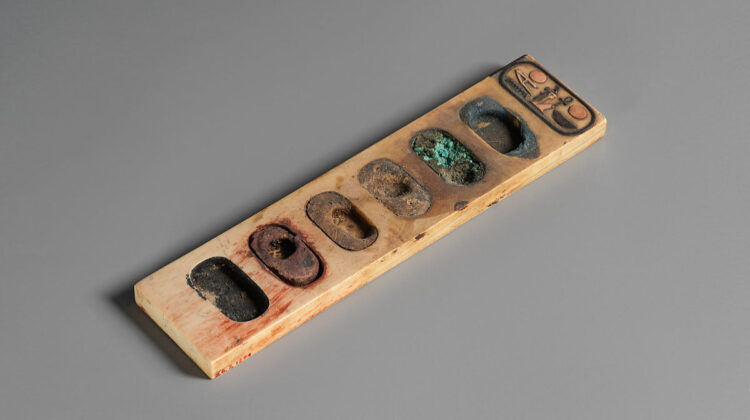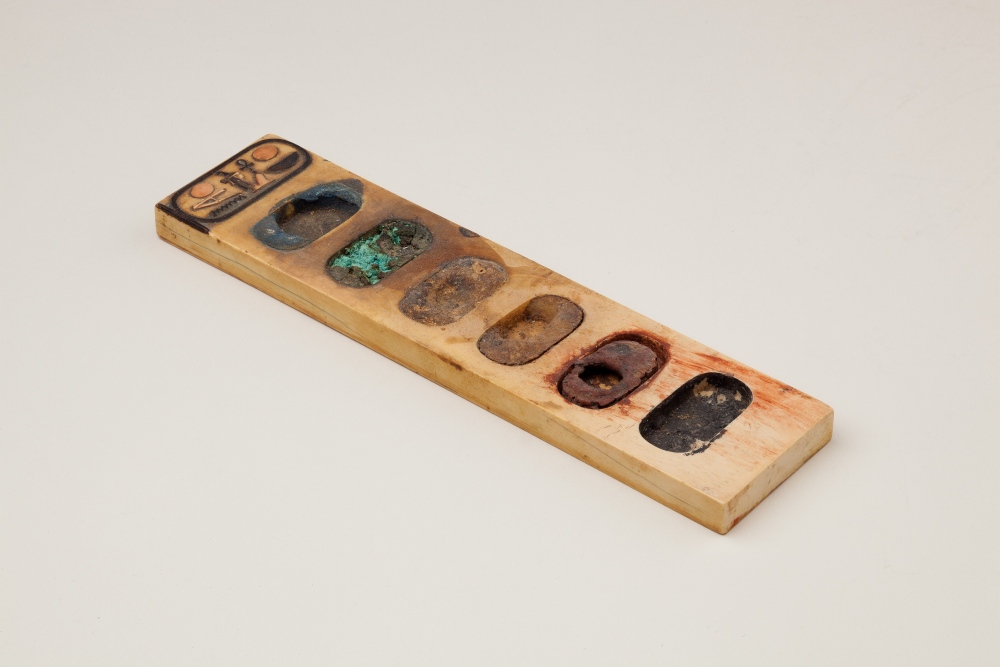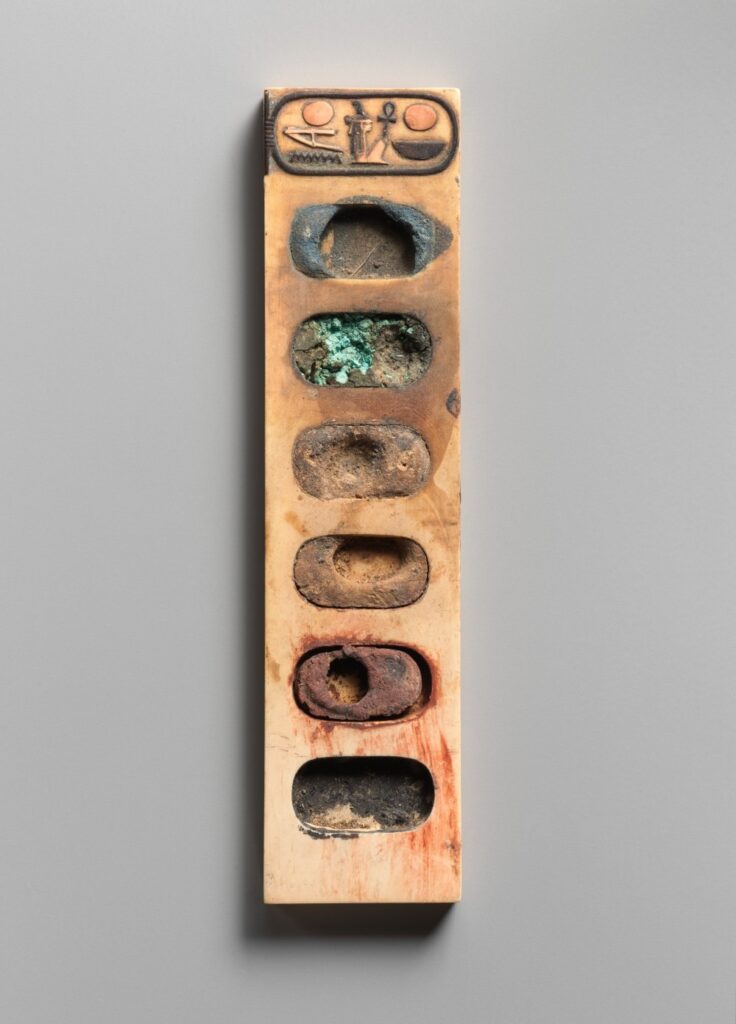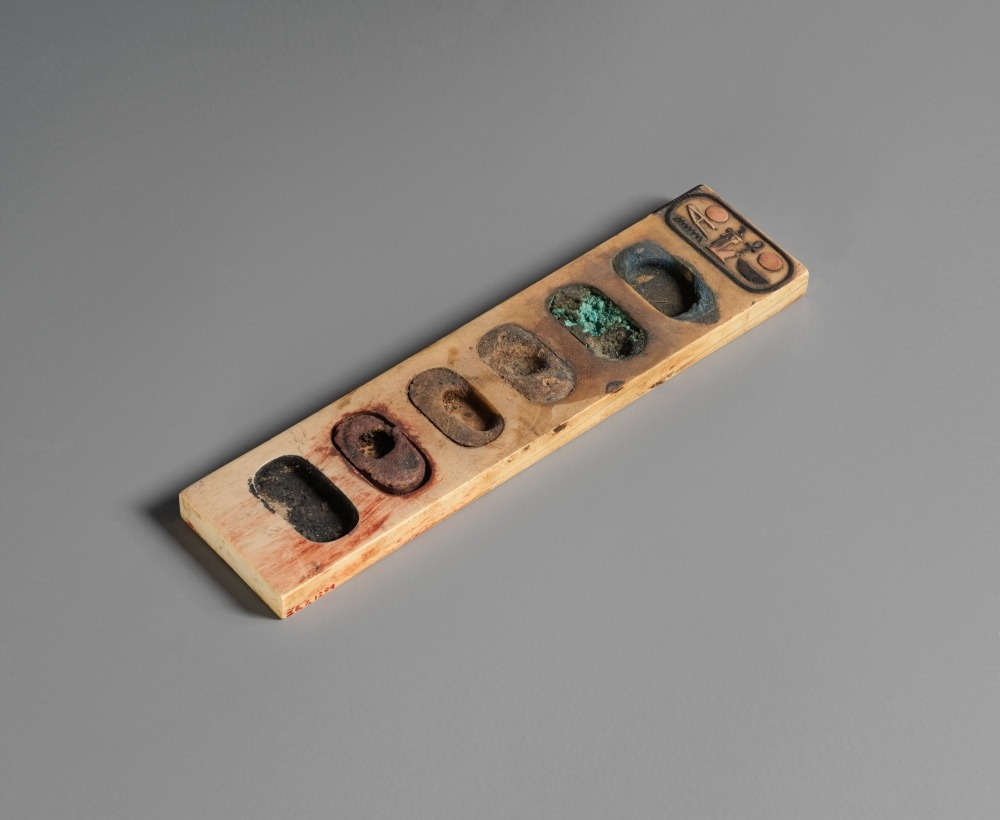
In the realm of ancient artifacts, some transcendent relics emerge, bearing witness to the creativity and ingenuity of civilizations long past. Among these treasures, a truly captivating piece stands as a testament to the artistic prowess of ancient Egypt—the 3,400-year-old painter’s palette. Crafted from a single ivory slab, this exquisite artifact is not merely a tool of the trade; it is a window into the world of colors that once breathed life into the canvas.
The palette’s design is both elegant and utilitarian, boasting six oval paint wells that have stood the test of time, preserving cakes of pigments that include vibrant shades of blue, green, brown, yellow, red, and black. Each hue echoes the artistic sensibilities of an era that revered beauty and storytelling through vivid imagery.

Resting under the careful guardianship of The Metropolitan Museum of Art in the heart of New York City, this ancient relic offers a direct connection to the distant past, an era that flourished between 1390 and 1352 BCE. Amid the brushstrokes of history, the palette provides a tactile link to the creative hands that once wielded it, invoking a sense of intimacy with the artisans of antiquity.
Beyond its chromatic legacy, the palette boasts a distinctive inscription that transports us even closer to the epoch it hails from. Etched in hieroglyphics, the name of the pharaoh Amenhotep III adorns this timeless canvas. The accompanying epithet, “beloved of Re,” adds a layer of devotion to a ruler who left an indelible mark on Egypt’s storied annals.

Amenhotep III, a figure known as “Amenhotep the Magnificent,” graced the throne as the ninth pharaoh of the illustrious Eighteenth Dynasty. His reign, spanning the years ca. 1386-1349 BC, was characterized by unparalleled prosperity and splendor. Egypt, under his leadership, achieved a zenith of international influence and power.
Within this remarkable epoch, a symphony of artistic and cultural accomplishments resonated. The very existence of this painter’s palette attests to the heights of sophistication reached during this era. This seemingly unassuming tool provides a tantalizing glimpse into the complexity of the artworks it once helped forge—an intricate dance of hues, strokes, and narratives that captivated the imaginations of those fortunate enough to behold them.

The painter’s palette serves as an exquisite relic, an ambassador from a time when ancient Egypt stood as a beacon of creativity, innovation, and architectural marvels. It is a testament to a civilization that set the bar high in fields ranging from art and culture to engineering and architecture. As we marvel at the preserved pigments and elegant design of this age-old artifact, we are reminded of the enduring legacy of a society that sculpted wonders from the palette of history itself.

Leave a Reply